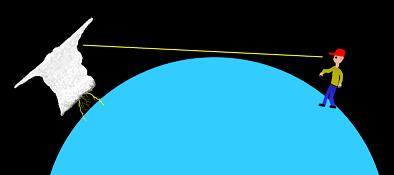I remember growing up and sitting out by the fire on my grandfather’s farm in Kansas watching the distant sky. I was fascinated. There was lightning with no thunderstorms!
Heat lightning. That’s what I was told.
I was 9.
As I got older, my interest in weather continued. One day I decided to investigate heat lightning. I wanted to know how it was possible to make lightning from thin air.
Turns out it was a lie. There is no such thing as heat lightning.
Sure, it is a term, but it isn’t a “real” thing. Well, besides the 1934 movie.
How does lightning work?
Lightning is the result of a lot – A LOT – of static charge built up by the constant rubbing of raindrops and hail stones inside of a thunderstorm.
Remember as a kid rubbing two balloons together? You could stick them to anything! I usually stuck the balloons to walls, each other, the dog or my little brother.
Well, static electricity was helping to hold the balloon, with one charge, to the other object, with the opposite charge.
If you want more information on static electricity, check this out
But imagine, instead of attracting the two objects the electricity discharged between the two objects. It happens frequently. Like when you are at work and always get shocked by the metal filing cabinet after you get up out of your mesh office chair.

Or, like in a thunderstorm.
A lightning bolt is just one object (the water droplets in the cloud) discharging to a different object (a hapless oak tree).
After a period of time a sufficient charge builds up between the cloud and the surface. The imbalance between the two objects is finally too much and BOOM! A discharge! Also known as a bolt of lightning!
Okay, we get it, but what about heat lightning
Okay, okay! But I promise that was worth your time – I’ll get back to it in a second. For now, recall high school science, remember that the Law of Conservation of Energy states that energy cannot be created or destroyed, it can only be changed.
That means electricity can’t just spontaneously happen. And we learned that in order to make a lightning bolt we need friction.
And there isn’t any free energy just roaming around the atmosphere nor is there friction in thin air.
So that means that the lightning must be coming from something else… And the answer is more obvious than you may think. It turns out that the heat lightning is actually just regular lightning (or sprites) coming from a thunderstorm that is so far away that you can’t hear the thunder!

That illustration is from NOAA. And it shows that because the earth is round and because there is a lot of stuff on the ground (cars, buildings, trees, cows, etc) it turns out that sound can only travel so far (about 10 miles). But light can travel up to 100 miles!
Another thing that should have raised your skeptical antennae is that heat lightning is often only visible at night. Seems odd, right? Why isn’t there ever random bolts of lightning on a hot, steamy afternoon?
As we learned, it’s because it can’t! It must be a distant thunderstorm. And the light can travel much farther at night – especially if you are away from city lights.
Perhaps this is a better illustration. This one is from accuweather:

So you can see the lightning, but you can’t hear the thunder.
Recently, in Hattiesburg, there was a perfect example of this phenomenon. People said they could see heat lightning in the southern sky. But there weren’t any storms near Purvis or Lumberton.
But the lightning they were seeing was likely from a storm nearly 85 miles away!
So, heat lightning isn’t really a thing. It is simply a thunderstorm that is too far away for you to hear, but at night, you can still see!


